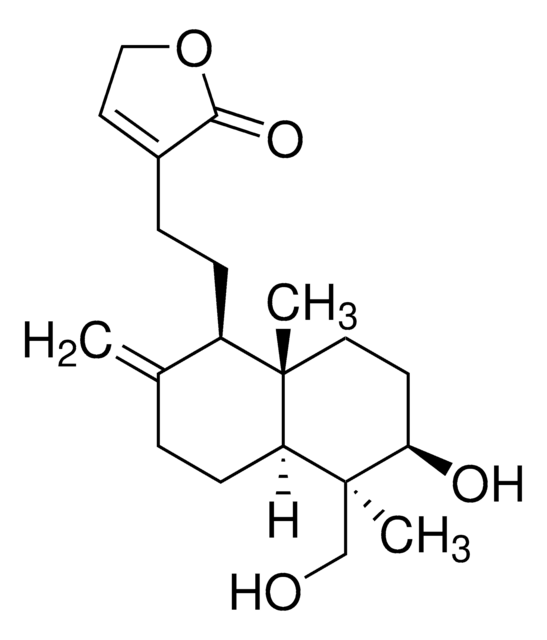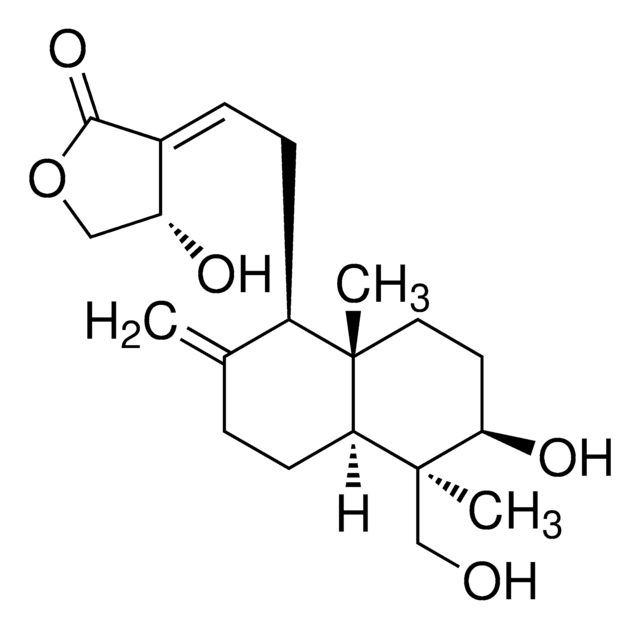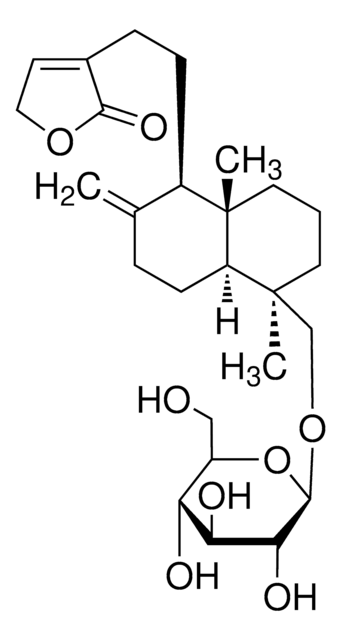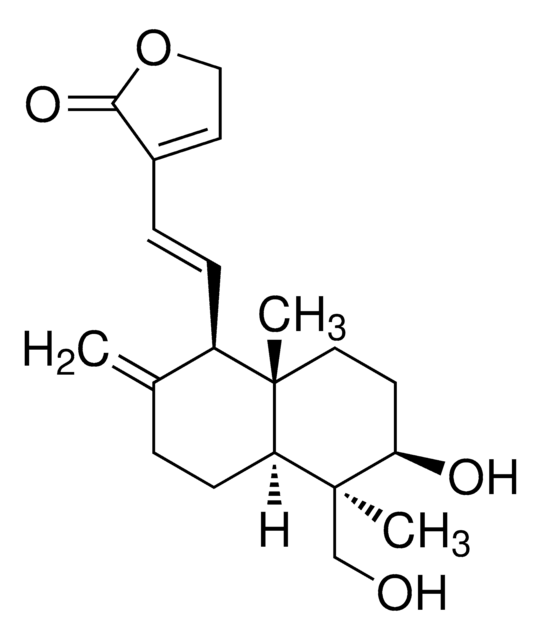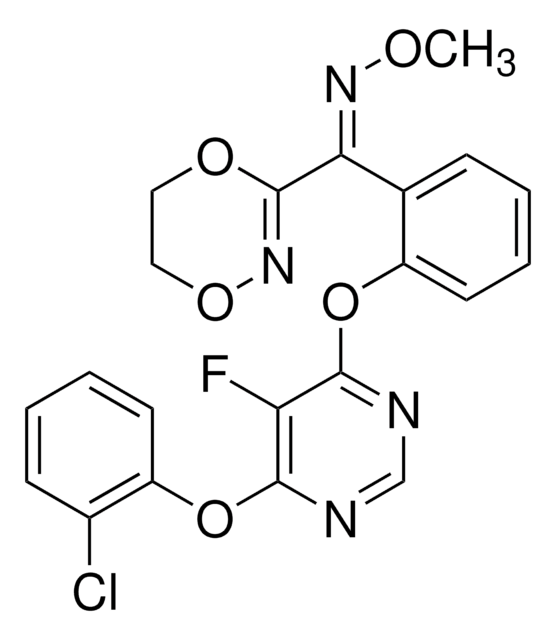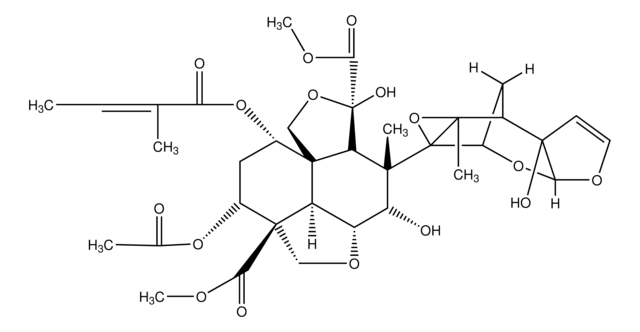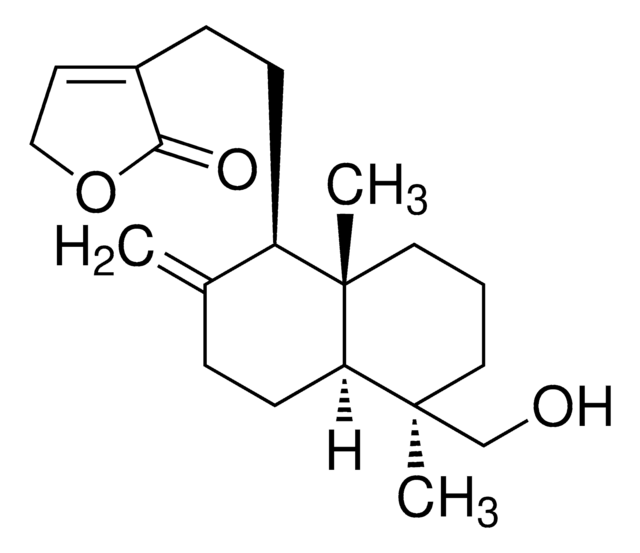49879
Neoandrographolide
analytical standard
别名:
ent-19-Hydroxy-8(17),13-labdadien-16,15-olide 19-O-β-D-glucopyranoside, D-Glucopyranosyloxy)methyl]decahydro-5,8a-dimethyl-2-methylene-1-naphthalenyl]ethyl]-2(5H)-furanone
About This Item
推荐产品
等级
analytical standard
质量水平
方案
≥95% (HPLC)
保质期
limited shelf life, expiry date on the label
技术
HPLC: suitable
gas chromatography (GC): suitable
应用
food and beverages
包装形式
neat
SMILES字符串
C[C@]1(CCC[C@@]2(C)[C@H](CCC3=CCOC3=O)C(=C)CC[C@H]12)CO[C@@H]4O[C@H](CO)[C@@H](O)[C@H](O)[C@H]4O
InChI
1S/C26H40O8/c1-15-5-8-19-25(2,14-33-24-22(30)21(29)20(28)18(13-27)34-24)10-4-11-26(19,3)17(15)7-6-16-9-12-32-23(16)31/h9,17-22,24,27-30H,1,4-8,10-14H2,2-3H3/t17-,18-,19-,20-,21+,22-,24-,25+,26+/m1/s1
InChI key
YGCYRQKJYWQXHG-RDNQFMDVSA-N
正在寻找类似产品? 访问 产品对比指南
一般描述
应用
包装
储存分类代码
11 - Combustible Solids
WGK
WGK 3
闪点(°F)
Not applicable
闪点(°C)
Not applicable
我们的科学家团队拥有各种研究领域经验,包括生命科学、材料科学、化学合成、色谱、分析及许多其他领域.
联系技术服务部门